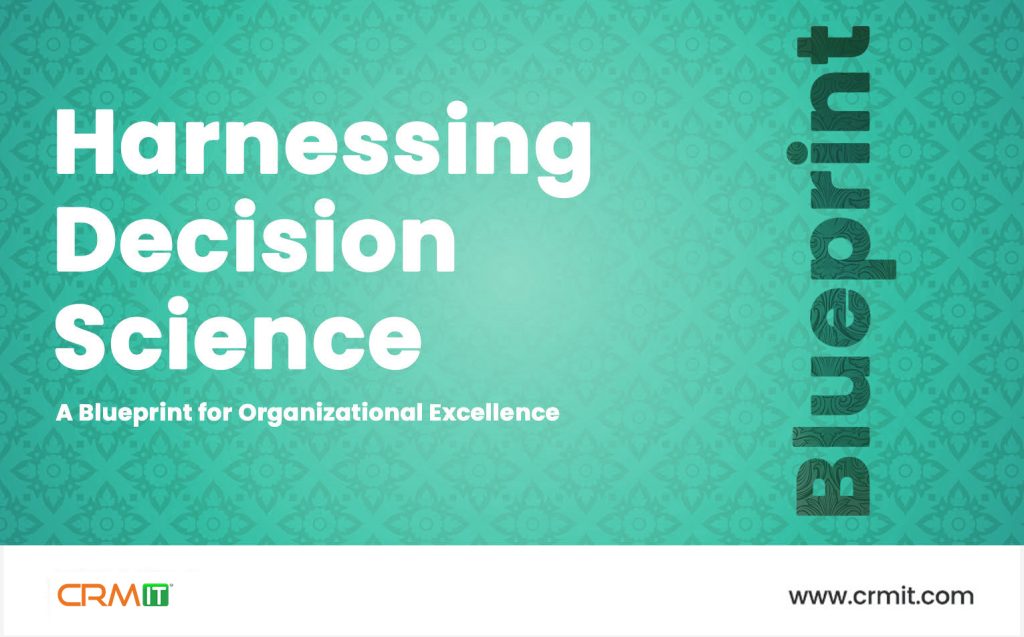Harnessing Decision Science: A Blueprint for Organizational Excellence

1. Identify Decision Points:
Begin by identifying critical decision points within the organization. These are junctures where decisions significantly impact outcomes, performance, or strategy. From a sales perspective, these might include decisions revolving around:
Identify Decision Points:
Deciding which leads to prioritize for follow-up based on factors like lead quality, potential revenue, and likelihood of conversion. Pricing Strategy: Determining the pricing strategy for products or services, including setting initial prices, discounts, promotions, or even regional adjustments to maximize revenue while remaining competitive in the market.
2. Understand the Decision-Making Process around these Decision points:
deep understanding of how these decisions are currently made within the organization. This involves evaluating factors such as the impact and quality of the decision, decision quality, speed, alignment with objectives, and the degree of data-driven decision-making i.e. the degree to which data was used to support and justify decisions.
3. Analyze Data
Utilize statistical and analytical tools to analyze the data. This could involve techniques such as regression analysis, predictive modeling, and other machine learning algorithms to identify patterns, correlations, and trends.
Additionally assess whether there are other data points, aside from those currently available, which could be influential in the decision-making process.
4. Apply Behavioral Science Insights
Incorporate insights from behavioral science to understand how human biases and cognitive limitations might impact decision-making. For example, the availability heuristic suggests that people tend to overestimate the importance of information readily available to them. This could lead to biased decision-making if recent, vivid events disproportionately influence choices. Similarly, the anchoring effect demonstrates that individuals rely heavily on the first piece of information (the “anchor”) they receive when making decisions, even if it’s outdated or irrelevant.
By recognizing these biases, decision-makers can implement strategies to counteract their influence, such as diversifying information sources, using decision prompts at key moments to encourage consideration of alternative perspectives, or implementing decision-making protocols that reduce the impact of irrelevant anchors.
5. Factor Ethical Considerations in Decision-Making
In the pursuit of optimizing outcomes and enhancing decision-making processes, it’s imperative for organizations to prioritize ethical considerations. Decision science, while powerful in driving efficiency and effectiveness, must also adhere to ethical standards to ensure fairness, transparency, respect for privacy, and societal benefit. Once any ethical considerations have been addressed, we can start creating decision models.
6. Develop Decision Models
Utilize findings from the steps above to develop both the “as-is” and “to-be” decision support models. Incorporate insights gathered from data analysis, behavioral science, and an assessment of decision-making processes to design Decision Models that accurately reflect the current state (“as-is”) and propose improvements for future decision-making (“to-be”).
These models could be quantitative (e.g., decision trees, Markov models) or qualitative (e.g., influence diagrams, decision matrices), and should align closely with organizational objectives and priorities.
7. Test and Validate Models
Validate decision models using historical data or through simulation techniques. This helps ensure that the models accurately understand and capture the decision-making environment and produce dependable results.
8. Implement Decision Support Systems
Develop decision support systems (DSS) or tools that leverage decision models to assist decision-makers in making informed choices. These tools could range from data-driven dashboards to complex algorithms that provide recommendations.
9. Monitor and Evaluate
Continuously monitor the performance of decision-making processes and the effectiveness of implemented interventions. Collect feedback from stakeholders and adjust strategies as needed to improve outcomes.
10. Continuous Improvement
Establish mechanisms for continuous improvement, including regular reviews, feedback loops, and opportunities for innovation. Encourage a mindset of adaptability and agility to respond to changing market conditions and organizational needs. Organizations employing an agile approach embrace the iterative nature of decision-making, where feedback from stakeholders and real-world outcomes inform subsequent decisions. By embracing this iterative approach, organizations can quickly adapt to new information, refine decision-making processes, and stay ahead in dynamic and competitive environments. This culture of continuous improvement fosters innovation, empowers employees to experiment with new ideas, and ultimately drives organizational success in an ever-evolving landscape.
By following the outlined steps above and integrating decision science principles into organizational processes, businesses can make more informed, data-driven decisions that lead to better outcomes and competitive advantages.
Additionally, investing in training and development programs is crucial for building organizational capabilities in decision science. Employees should be equipped with the necessary skills in data analysis, behavioral science principles, and decision-making tools to recognize not only where but also how to leverage decision Science methodologies.
Ultimately, embracing Decision Science isn’t just beneficial — For an organization aiming to thrive in the intricate fabric of today’s business landscape, it’s absolutely imperative.
